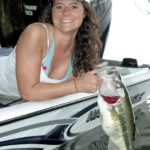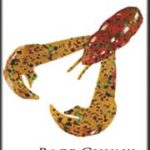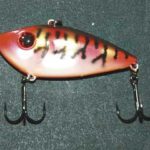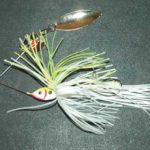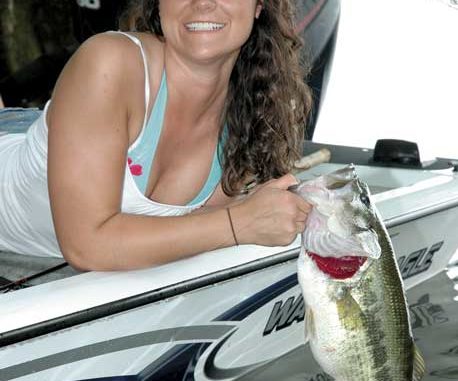
You’ll love the sweet music coming from the end of your line this month while fishing school specks in this Cocodrie hotspot.
May is a good month to fish many lakes in Louisiana, but I prefer Toledo Bend because the topwater bite early in the morning there is phenomenal. The bass have just completed the spawn a couple of weeks earlier, but the weather’s still moderate, and the bass are really feeding up after the spawn. The bass are starting to move back toward the structure, and they’ll often be holding on the edge of grass and on hard bottoms. At this time of year, you can catch bass on Toledo Bend in any depth of water you want to fish using any pattern.
Fishing at daylight
Generally, around the first of May, the shad still will be spawning, and the bass usually will bunch together in large schools around schools of spawning shad.
A couple of tactics catch the bass, and there’s two ways to find the schooling shad. The easiest is to see the shad flipping on the surface and cast to them. But you also can locate the shad by fishing a spinnerbait and feeling the spinner bait hit the shad you can’t see.
I don’t know if the male shad chase the spinnerbait and bump it because they think the lure is a female shad, or if they just don’t like the spinnerbait coming through the area where they’re trying to spawn.
So the spinner bait is a good tool to use early in the morning to pinpoint schools of shad and to catch bass feeding on those schools of shad.
Oftentimes, you can see these schooling shad that are spawning at the bases of cypress trees and around the boat docks and pilings. The shad spawn usually lasts for about an hour after the sun first starts to appear. During that magic hour, the bass will be gorging themselves with shad, and you often can have a great time of bass fishing.
I prefer to fish a 1/2-ounce Strike King spinnerbait in the blue-shad or green-shad color with either a No. 4 or 4 1/2 willowleaf blade. White also will work, depending on the water color.
I’ll reel the spinnerbait slowly, looking for the fish on shallow grass humps, ridges and points. The shad like to deposit their eggs on a hard surface, like grass, boat docks and rocks. Normally, the bass will be holding shallow in about 4 or 5 feet of water. You may be fishing in a pocket where there’s a boat dock, and you’ll actually see the shad circling a piling and spawning.
When a shad’s attacking your spinnerbait, you’ll feel a bump, bump, bump. But when a bass hits the spinnerbait, there’s no doubt you’ve had a bass bite. Many times the shad will be bumping the spinnerbait, and when the bass sees the shad, it will attack the shad and the spinnerbait simultaneously. For this reason, I always fish a trailer hook on my spinnerbait at this time of year.
If I see the shad on the surface flipping, I prefer to throw a bait that stands out from the school of shad, such as a chartreuse buzz bait or a chartreuse or fire-tiger Red Eye Shad instead of a shad pattern. Although I want my bait to mimic the shad, I want it to be slightly different looking. If the bass won’t bite that off-colored lure, I’ll fish a bait that’s the color of the shad, like Sexy Shad.
I’ve learned that if I can get the bass to bite that off-colored bait, my hook-up percentage is much higher than if I fish a shad-colored bait.
If the bass won’t hit these baits, I’ll return to the spinnerbait. To make the spinnerbait stand out as it comes through the school of shad, instead of fishing it on a steady retrieve, I’ll pop the bait several times during the retrieve and then let it fall.
When you use a steady retrieve, the shad will come to the spinnerbait, but when you jerk it, the shad will scatter, and many times that’s when the bass will attack the spinnerbait. I call this tactic fishing a spinnerbait (giving it more action than a steady retrieve) as opposed to just winding a spinnerbait.
Sun comes up
When the sun comes up, I start fishing the hydrilla beds. If the area has wind or cloud cover, I’ll fish the edge of the hydrilla with a spinnerbait. But if the day is bluebird with a high sky and sunshine, I’ll fish a 3/4- or a 1-ounce black/blue, green/pumpkin or pumpkin/green Strike King jig through that grass, using a Rage Tail chunk, which resembles a crawfish, on the back of the jig. I’ll key on the outside edge of those hydrilla beds first.
If that doesn’t work, I’ll fish the jig in the middle of the hydrilla beds.
Middle of the day
In the middle of the day, I’ll be fishing a Carolina-rigged Zero, a cigar-shaped plastic worm or a plastic lizard on hard bottoms. I’ll be using a 3/4- or 1-ounce slip sinker up the line with a bead and a barrel swivel below the sinker. Then I’ll have 24 inches to 3 feet of leader with either the Zero or the lizard on the hook.
I look for places in the grass beds where there’s a clay bottom. If you can find one of those bare spots on top of an underwater hump, point or any other type of hard-bottom structure where the bass will school up, you may be able to fish one of these places and catch a bass on every cast.
In May, you can catch from 10 to 50 bass at Toledo Bend, depending on the day. The fishing at Toledo Bend is good from one end of the lake to the other. The lake is as good now — if not better — than it’s ever been before. Therefore, this is my pick for this month, and you’ll be wise to consider this lake for your fishing, too.
